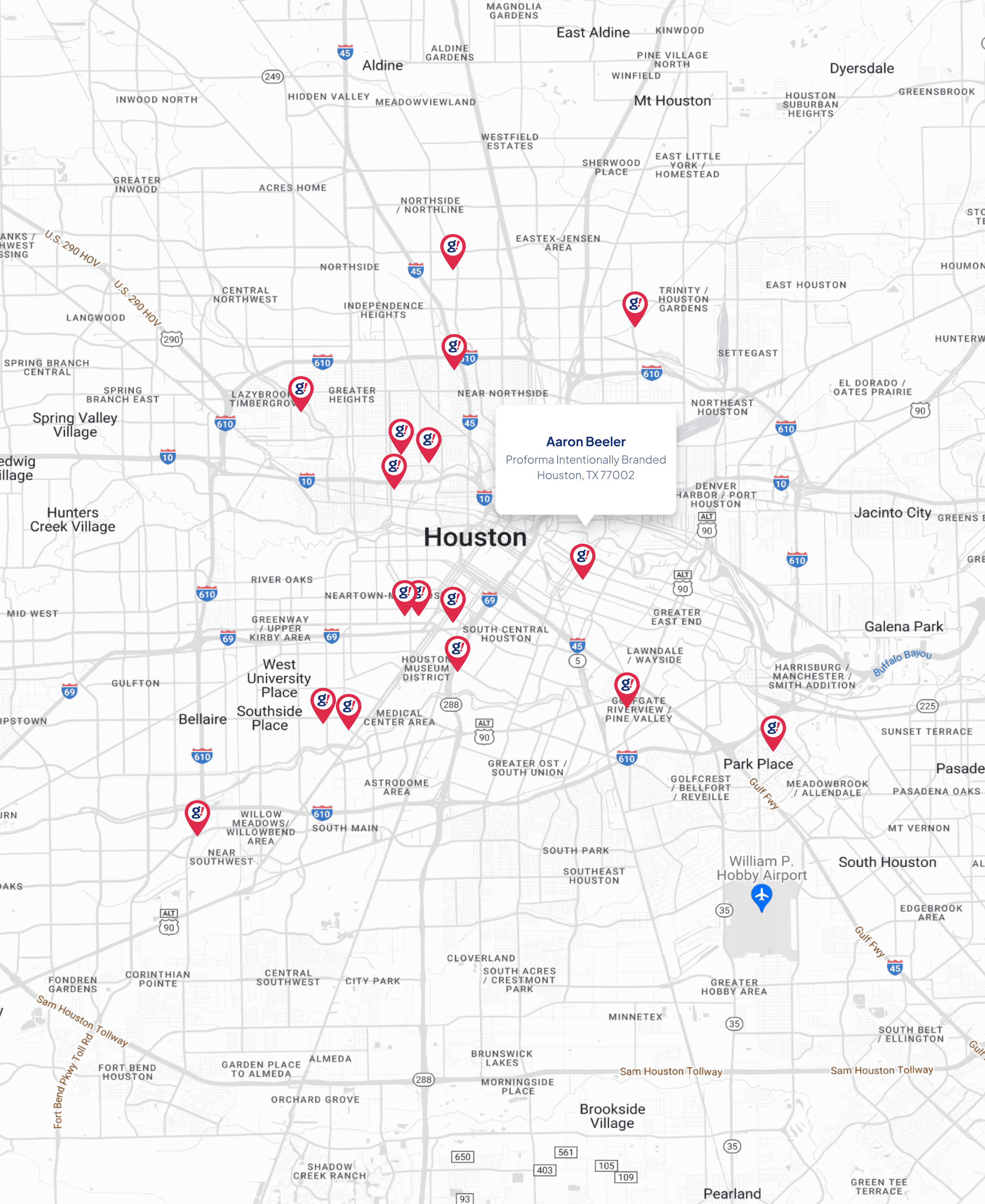Geo-Targeting Solutions
Before & After: The Power of Geo-Targeting Solutions in E-commerce
Discover how geo-targeting solutions transform e-commerce strategies. Explore case studies, user experiences, and the future of personalized marketing in 'Before & After: The Power of Geo-Targeting Solutions in E-commerce'. Elevate your brand's engagement today!
Aug 08, 2025
14 min read

Before & After: The Power of Geo-Targeting Solutions in E-commerce
Navigating the Geo-Targeting Landscape: A Prelude to Transformation
Welcome to the digital age, where our phones know us better than our best friends, and businesses strive to reach us with the precision of a dart champion. Enter geo-targeting, a clever cocktail of technology and marketing strategy. Picture this: A coffee shop sends a deal for a free pastry to someone just steps away, or an online fashion store dangles rainy-day discounts in Seattle. That’s geo-targeting for you, rewriting the rules of customer engagement.
In this high-tech dance, brands use GPS signals and IP addresses to zero in on exact locales, crafting messages that resonate with local quirks and happenings. Imagine a retailer, scattered across the country, pushing cool coats in Vermont and sundresses in Florida, all thanks to geo-targeting. It’s a customer experience dream and a conversion rate savior.
But tread carefully, how you choose between opt-in and opt-out strategies can make or break your campaign. Casting a wide net might snare more fish, but focusing your efforts can hook the big ones. Knowing your audience inside out ensures every marketing dollar chats up the right crowd.
The magic of geo-targeting doesn’t stop there. Advanced tools let businesses tweak bids based on specific regions, think radius targeting, which optimizes presence around key spots. Pair a local concert with a restaurant’s targeted promo, and watch the crowds gather.
Yet, this journey comes with hurdles: balancing captivating content with privacy regulations is key. And, of course, ensuring ads reach locals, not just curious searchers, is crucial.
Companies embracing geo-targeting thrive in a digital world, creating marketing campaigns where personalization reigns supreme. As we explore deeper, we’ll reveal how location-based marketing forges tighter connections, driving success in the bustling e-commerce arena.
From Static to Dynamic: Case Studies that Paved the Way
Once upon a digital time, ads were one-size-fits-all, like ill-fitting jeans. But then geo-targeting swaggered onto the scene, turning blanket campaigns into tailor-made experiences. Enter gotcha! Mobile Solutions, a prime example of this transformation, showing us how to go from static to dynamic advertising.
Back in the day, businesses flung ads at everyone, hoping something would stick. Geo-targeting flipped the script, matching messages with physical locations. Gotcha! grabbed this concept early, deploying campaigns using IP addresses and GPS data to deliver local love letters to potential customers.
Take, for example, a regional coffee chain struggling to boost foot traffic. Gotcha! weaved geo-targeting into their strategy, dropping ads for seasonal sips to folks nearby. The result? A symphony of conversions! Customers responded to offers timed with local events, creating a real-time resonance.
And it wasn’t just about location-based ads. Gotcha! used an opt-out approach, sidestepping areas where earlier campaigns flopped. By understanding their audience with laser-focus, they spent wisely and saw engagement soar. Consumers felt spoken to, not shouted at, a far cry from generic ads of yore.
This dynamic geo-targeting is more than boosting ad efficacy; it’s crafting a personal shopping saga. As businesses hop on this trend, they remind us: knowing your audience isn’t just helpful; it’s essential. In today’s competitive market, the message is clear: adopt geo-targeting for an interactive, location-aware experience that resonates deeply.
Beyond Borders
Welcome to a world where geo-targeting isn’t just a tool, it’s a global bridge. As e-commerce booms, companies like gotcha! Mobile Solutions are using geo-targeting to capture the essence of consumer behavior, wherever they roam.
Imagine an artisan bakery in Paris showcasing pastries online, or a San Francisco startup reaching urban customers. Instead of casting wide nets, both use geo-targeting to speak directly to local hearts, increasing ad relevance and conversion chances exponentially. This global love affair with geo-targeting shows it’s not just effective; it’s essential.
The benefits go beyond local promotions. Launching a new product globally? Geo-targeting reveals insights into trends and preferences unique to each locale. Picture a retail giant noticing more interest in Tokyo than Berlin, they can amplify efforts in Tokyo and tweak Berlin strategies, using data-driven insights.
As technology evolves, AI and machine learning are elevating geo-targeting. With the ability to analyze location data in real-time, businesses capitalize on trends and events, launching timely campaigns that strike a chord with audiences.
Success hinges on understanding your audience. Opt-in or opt-out strategies guide regional engagements, while radius targeting sharpens focus on high-demand areas. This personalized approach not only maximizes ROI but also deepens brand-consumer bonds.
In summary, geo-targeting has shifted from a trend to a seismic change in market perception. By embracing localized strategies, businesses transcend borders, crafting campaigns that resonate deeply. As e-commerce evolves, geo-targeting will shape marketing’s future, where relevance, personalization, and engagement rule supreme. For businesses poised to leap forward, the challenge is weaving unique narratives into a global tapestry, ensuring every customer interaction is meaningful and tailored.
The User Experience Revolution: Crafting Personalized Journeys
In today's frenetic digital dance, where marketing messages fly faster than tweets during a celebrity meltdown, standing out is crucial. Enter the user experience revolution, propelled by geo-targeting. It’s not just about knowing where consumers are, it’s about understanding their world, enabling brands to tailor experiences that resonate with local cultures and needs.
Picture a bustling Manhattan street. A consumer saunters past a café, their phone buzzes with a discount on their favorite latte. It’s geo-targeting magic, recognizing loyalty and crafting a seamless experience. This tech wizardry transforms basic transactions into engaging tales, rewarding loyalty and speaking to consumers directly.
E-commerce titans are not exempt. Picture an online retailer promoting seasonal items tailored to heatwaves in one region, while pushing cozy threads in another. This strategic geo-targeting not only boosts conversions, but illustrates an understanding of regional needs, crafting narratives that elevate ads to engaging stories.
Opt-in or opt-out strategies allow brands to target deliberately. Opt-out, for instance, excludes non-priority zones, ensuring efficient marketing budget usage. Businesses can focus on promising areas, maximize ROI, and enhance overall strategies. Combine this precision with deep consumer insights, and brands engage meaningfully, where every moment matters.
As we embrace this user experience revolution, the call is clear: wield geo-targeting to turn marketing strategies into personalized journeys. By weaving this tech into your strategy, you elevate engagement, build loyalty, and position your brand as a digital leader. Understand your audience, where they are, what they seek, how you can serve them. By doing so, you craft memorable, action-inspiring experiences.
Data at the Core
In today’s fast-paced world, where preferences shift like high school cliques, data is e-commerce’s North Star. At the heart of geo-targeting’s magic lies an intricate network of data collection and analysis, stripping the guesswork from marketing. Gotcha! Mobile Solutions has mastered the art, transforming audience interaction through geo-targeting.
Geo-targeting taps into various data points like IP addresses and GPS, creating a detailed behavioral map. Picture a San Francisco store running a geo-targeted campaign during a city event. By analyzing real-time data, they can deliver ads to event-goers, enticing them with offers that hit just right. This precision not only spikes conversions but enhances the shopping experience, fostering loyalty and repeat visits.
Opt-in and opt-out strategies shape campaign objectives. Opt-in casts a wide net, ideal for brands eager to expand reach. A new coffee shop might target a 10-mile radius to spark initial foot traffic. Opt-out refines targeting, ensuring priority areas receive attention, optimizing marketing spend. A bakery might focus ads within a three-mile radius, ensuring they reach those likely to stop by.
As competition tightens, businesses are turning to methods like radius targeting, boosting visibility where it counts. Picture a restaurant increasing lunchtime ad spend to capture nearby office workers. These data-driven decisions bolster impressions and click-through rates.
Successful geo-targeting hinges on data analysis. Understanding user behaviors in specific locales lets brands tailor messages, reflecting local culture and preferences. This hyper-personalized approach deepens consumer-brand connections, transforming casual browsers into loyal patrons. In a digital realm where precision is king, geo-targeting data is the secret sauce businesses need to thrive.
Environmental Scanning: Pitfalls and Ethical Considerations
In the vibrant world of e-commerce, geo-targeting is a powerful tool for personalizing campaigns. But with great power comes great pitfalls and ethical dilemmas. How does a savvy company, like gotcha! Mobile Solutions, navigate these choppy waters?
First, there's the delicate dance between enhancing experiences and invading privacy. Geo-targeting can pinpoint individuals through GPS and IP tracking, serving ads that resonate locally. While great for conversion rates, it raises eyebrows in the privacy department. Users often don’t know how their location data is harvested, leading to Big Brother-like unease. Opt-in strategies let users choose; opt-out can feel like a sneak attack.
Accuracy is another hurdle. Imagine ads for snow gear mid-summer due to a system hiccup. Such blunders not only squander marketing dollars but also chip away at consumer trust. Nobody likes being bombarded with irrelevant ads.
Then there’s the ethical minefield of targeting specific demographics within geographic spots. Excluding areas based on socio-economic perceptions can fuel inequality and resentment. Companies must ensure geo-targeting strategies are inclusive, providing equitable access to products and services across diverse communities.
As e-commerce evolves, brands must mind their ethical Ps and Qs. Environmental scanning helps understand pitfalls and actively seek solutions that prioritize transparency and privacy. By embracing best practices, like clear data use communication and user control, companies can reap geo-targeting’s rewards while building trust. Ethical marketing isn’t just compliance; it’s the roadmap to enduring customer relationships.
The Future of Shopping: Predicting Trends in Geo-Targeting
Standing on today’s digital brink, we peek into the future of shopping, where geo-targeting is not just a tactic, it’s the strategy. It’s shifted from niche to necessity, thanks to converging tech, consumer behavior, and market dynamics. So, what does tomorrow hold?
Picture strolling past a boutique, your phone pinging with a discount on shoes you ogled online. This isn’t sci-fi; it’s geo-targeting crafting a seamless bridge between our digital and physical worlds. With pioneers like gotcha! Mobile Solutions leading the charge, geo-targeting is morphing, using data from GPS, IP addresses, and Wi-Fi to create tailored experiences.
AI and machine learning enhance these capabilities, analyzing data in real-time to predict behavior. For instance, an e-commerce platform might offer promos based on location and weather, think umbrellas during a downpour. This precision creates a hyper-personalized journey, resonating deeply and building loyalty.
Omnichannel retailing, where online and offline experiences merge, is another trend. Geo-targeting guides consumers to local stores with items ready for immediate pickup. This strategy not only boosts convenience but strengthens brand-consumer bonds. Expect a more interactive shopping scene, where consumers shape their environments.
In conclusion, geo-targeting will revolutionize e-commerce, making shopping personal, data-driven, and integrated. Brands embracing these technologies will cultivate deeper consumer connections. The power of geo-targeting is reshaping e-commerce, urging brands to adapt and innovate continually. The future isn’t just shopping location; it’s about experiencing it in revolutionary ways.
Success Metrics
In the whirlwind of e-commerce, where clicks can alter fortunes, measuring geo-targeting’s impact isn’t optional, it’s crucial. For companies like Gotcha! Mobile Solutions, success metrics distinguish between strategies that soar and those that sputter.
Success metrics in geo-targeting go beyond traditional analytics. While CTR and conversion rates are essential, businesses need a granular understanding of audience engagement. Consider a local restaurant promoting its seasonal menu. Analyzing customer interactions during local events or prime dining hours reveals how geo-targeted messaging impacts behavior.
Metrics like customer acquisition cost (CAC) and return on advertising spend (ROAS) illuminate campaign effectiveness. If a geo-targeted ad outperforms in a priority area, it validates the strategy and informs resource allocation. Businesses enhance strategies by A/B testing in various locales, tailoring future campaigns to specific demographics.
Data analytics play a pivotal role here. Success metrics should reflect evolving consumer interactions, tracking how ads affect immediate sales and long-term loyalty. A successful geo-targeting campaign promoting a local pop-up shop might drive sales and foster trust, creating loyal brand advocates.
To navigate this competitive terrain, invest in sophisticated analytics platforms. By leveraging insights from success metrics, businesses refine geo-targeting, ensuring strategies remain relevant and effective. Geo-targeting isn’t just a tool; it’s a transformative approach to consumer engagement that, when executed with precision, drives growth and success in e-commerce. In this digital age, success lies in measuring, adapting, and reaping geo-targeting's insights.
Crafting Your Geo-Targeting Strategy
In today's digital marketing maelstrom, geo-targeting is reshaping how businesses connect with audiences. Companies like gotcha! Mobile Solutions harness this power to deliver location-based ads that truly resonate. So, how do you craft an effective geo-targeting strategy? It starts with understanding your audience and the data behind your potential customers.
First, identify your target crowd and their locales. This necessitates diving deep into existing customer data and scoping out high-value prospects. By analyzing location data, from IP addresses to GPS, you create a map of customer hotspots. Take a coffee shop near a college campus: understanding this lets you tailor campaigns to students, perhaps enticing them with study-session discounts or group deals.
Decide on your location targeting strategy next: opt-in or opt-out. Opt-in reaches a wider array, building brand awareness, while opt-out targets priority locations, maximizing conversions. If driving foot traffic to a physical spot is key, the latter proves more effective.
Radius targeting sharpens efforts further. Set a specific radius around your location, boosting ad bids within it to climb search result ranks among nearby users. Imagine a restaurant increasing visibility to those within a mile during lunch, driving foot traffic and revenue.
As you craft strategy, consider local events, culture, and region-specific traits that sway behavior. For example, during a city music festival, nearby accommodation or dining ads can captivate festival-goers, aligning offerings with activities and strengthening brand-community ties.
An effective geo-targeting strategy transcends basic ads; it crafts narratives speaking to specific locations. As geo-targeting evolves, businesses embracing it open doors to unprecedented engagement and conversion rates. Understand your audience deeply, approach with the right message at the ideal time and place, and let geo-targeting power exceed expectations.
Closing the Loop
In the bustling e-commerce landscape, building lasting customer bonds is paramount. As brands lean into geo-targeting, creating personalized, meaningful experiences becomes crucial. Geo-targeting empowers businesses to use location data for tailored content, heightening engagement and cementing brand-consumer bonds. This goes beyond transactions, it’s about nurturing trust, turning first-time buyers into lifelong fans.
Take a coffee chain launching a new drink. Instead of a blanket national ad, geo-targeting lets them pitch localized promos, highlighting events, store decorations, or app discounts. Personalization strikes a chord with customers who prefer feeling valued over being just another checkbox in a strategy. This engagement builds community, encouraging social media shares and brand recommendations.
Geo-targeting’s beauty lies in adapting to local tastes and preferences. A clothing retailer can craft messages aligning with regional trends or cultural events, connecting with communities. If a local festival looms, a retailer can launch a campaign promoting event-ready outfits, driving traffic and deepening customer relationships through thoughtful outreach.
Yet, closing the loop is crucial. It’s not just about reaching consumers; it’s about cultivating ongoing dialogue. Brands should harness geo-targeting data insights to refine strategies. Analyzing which promotions drive conversions in certain areas optimizes approaches. This iterative process sharpens future campaigns, showing a commitment to consumer needs, creating a cycle of trust and engagement.
In conclusion, geo-targeting’s power in building customer relationships goes beyond sales; it crafts genuine connections. By delivering timely, relevant, tailored content to local audiences, brands foster loyalty, encourage advocacy, and drive long-term success in the digital marketplace. As innovators like gotcha! Mobile Solutions lead this space, the potential for brands to create meaningful experiences is set to soar. Embrace geo-targeting as not just strategy, but a vital tool for nurturing enduring relationships.
Quick Summary
Geo-targeting isn't just a buzzword, it's revolutionizing digital marketing by transforming how businesses connect with consumers, one location at a time. From tailored coffee shop ads to dynamic retail strategies, companies like gotcha! Mobile Solutions are leading this charge, using location data to create memorable, personalized experiences that resonate with local audiences. This not only enhances customer engagement but also builds lasting relationships and trust. Dive into this narrative, and you'll find the keys to unlocking unprecedented marketing success in the digital age.

Need Help?
Check out these related products that can help:










